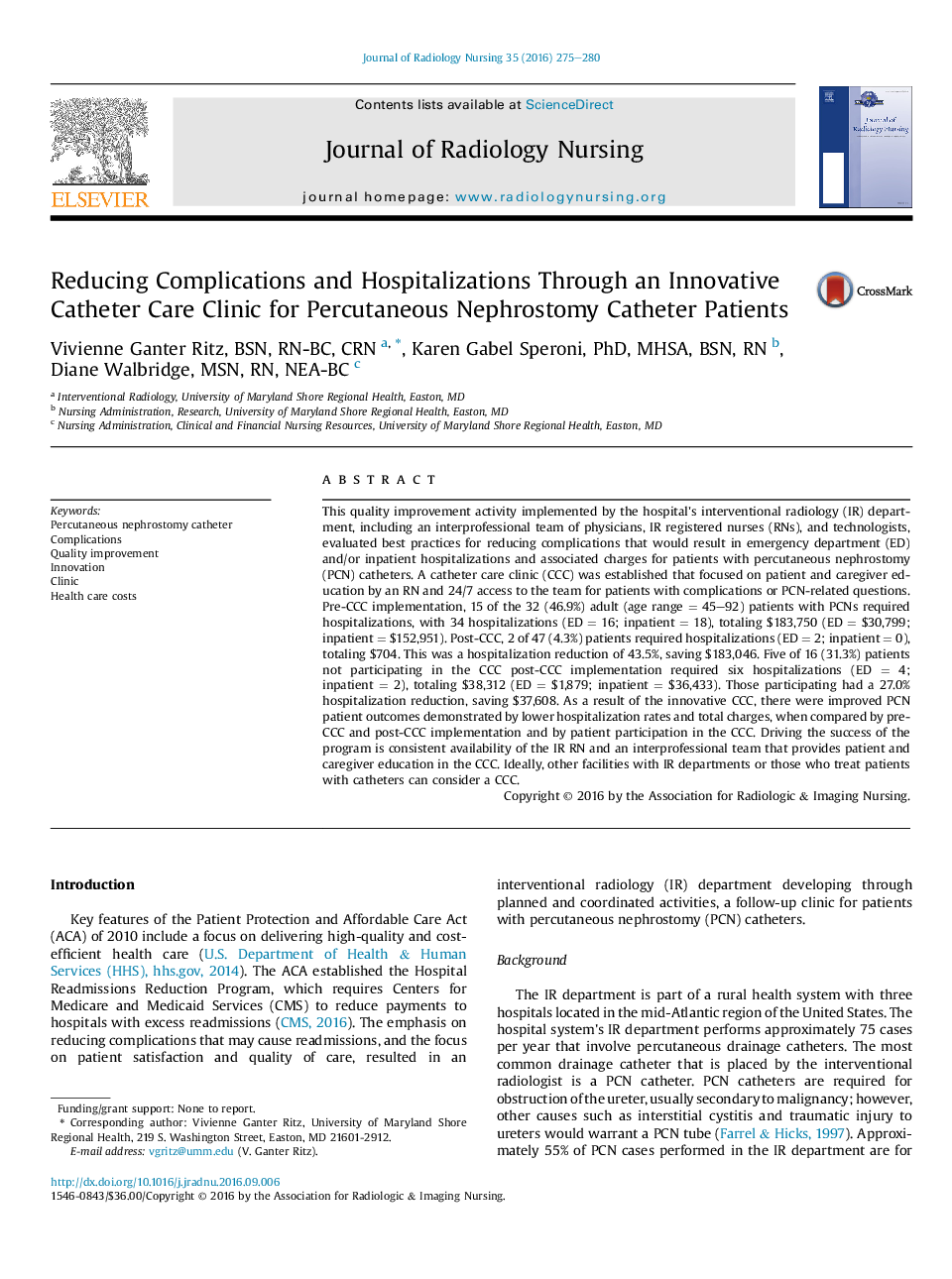| Article ID | Journal | Published Year | Pages | File Type |
|---|---|---|---|---|
| 5570687 | Journal of Radiology Nursing | 2016 | 6 Pages |
Abstract
This quality improvement activity implemented by the hospital's interventional radiology (IR) department, including an interprofessional team of physicians, IR registered nurses (RNs), and technologists, evaluated best practices for reducing complications that would result in emergency department (ED) and/or inpatient hospitalizations and associated charges for patients with percutaneous nephrostomy (PCN) catheters. A catheter care clinic (CCC) was established that focused on patient and caregiver education by an RN and 24/7 access to the team for patients with complications or PCN-related questions. Pre-CCC implementation, 15 of the 32 (46.9%) adult (age range = 45-92) patients with PCNs required hospitalizations, with 34 hospitalizations (ED = 16; inpatient = 18), totaling $183,750 (ED = $30,799; inpatient = $152,951). Post-CCC, 2 of 47 (4.3%) patients required hospitalizations (ED = 2; inpatient = 0), totaling $704. This was a hospitalization reduction of 43.5%, saving $183,046. Five of 16 (31.3%) patients not participating in the CCC post-CCC implementation required six hospitalizations (ED = 4; inpatient = 2), totaling $38,312 (ED = $1,879; inpatient = $36,433). Those participating had a 27.0% hospitalization reduction, saving $37,608. As a result of the innovative CCC, there were improved PCN patient outcomes demonstrated by lower hospitalization rates and total charges, when compared by pre-CCC and post-CCC implementation and by patient participation in the CCC. Driving the success of the program is consistent availability of the IR RN and an interprofessional team that provides patient and caregiver education in the CCC. Ideally, other facilities with IR departments or those who treat patients with catheters can consider a CCC.
Related Topics
Health Sciences
Nursing and Health Professions
Nursing
Authors
Vivienne BSN, RN-BC, CRN, Karen Gabel PhD, MHSA, BSN, RN, Diane MSN, RN, NEA-BC,
